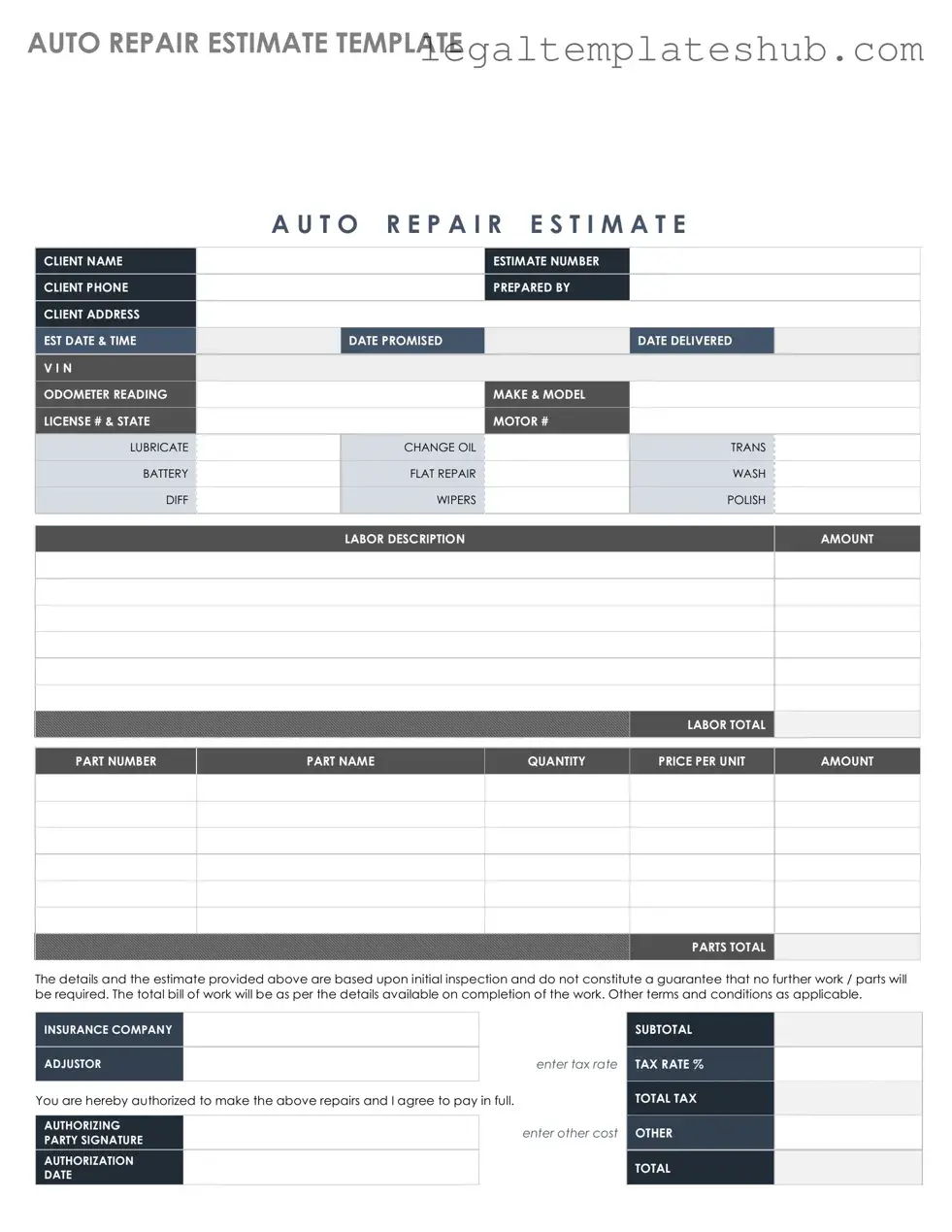Blank Auto Repair Estimate PDF Form
An Auto Repair Estimate form is a crucial document that provides a detailed breakdown of the expected costs for vehicle repairs. This form not only helps you understand the financial commitment involved but also ensures transparency between you and the repair shop. Ready to get started? Fill out the form by clicking the button below!
Access Editor
